Implicit Borders: a cartography of free will
Capucine Gros
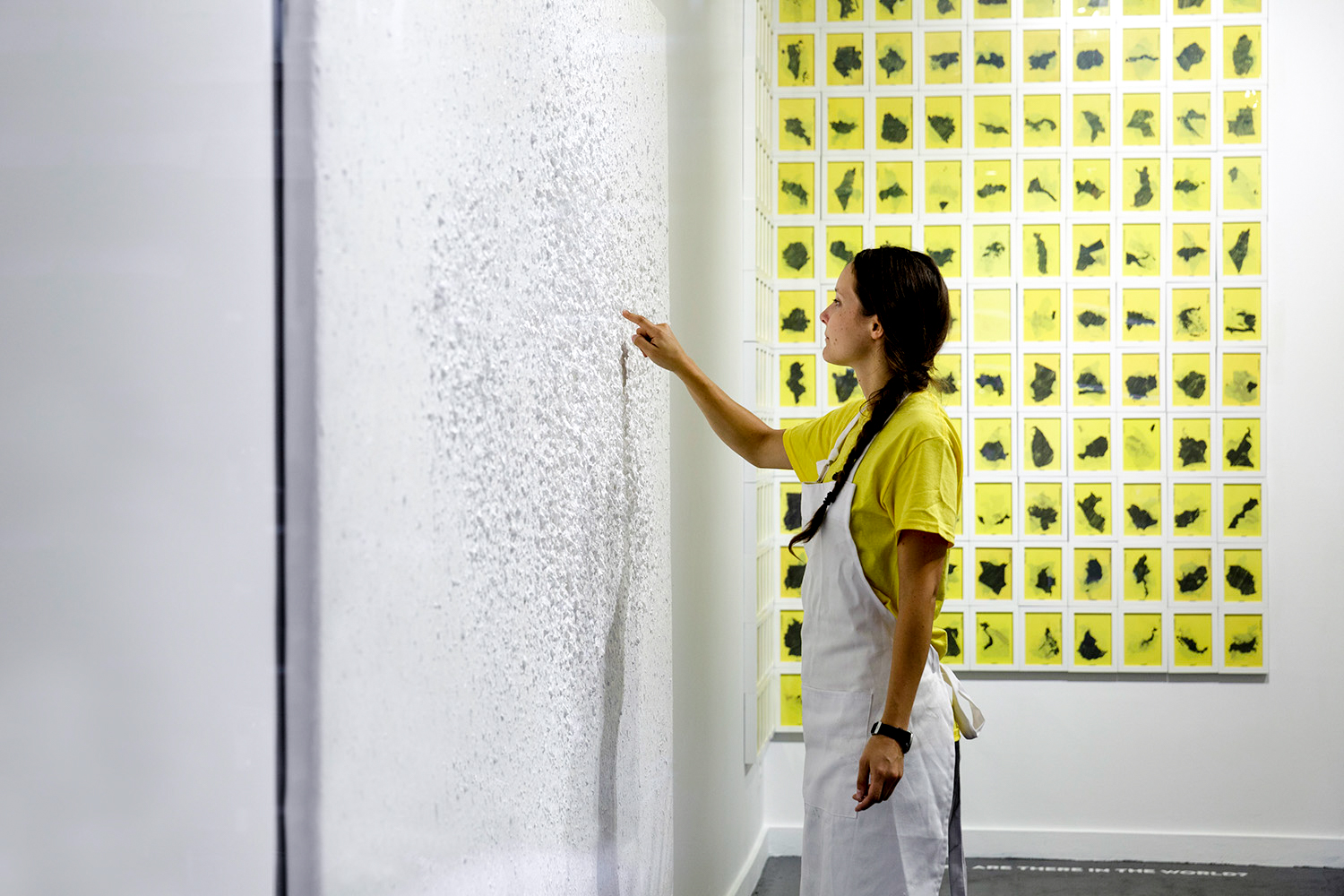
HUMAN STROKES, 2010-2017
In 2010, Capucine Gros started recording each death she hears or reads about. For these past 7 years, she has been acknowledging each death with a white paint stroke onto a 71” x 111” canvas gridded like a map of the world. While the work in the gallery is not for sale, the project can be commission-based by selecting one year since 2010 and Capucine will make a new 45”×71” painting using the data from that time. In acquiring this work, those deaths are re-acknowledged.

Capucine Gros
Implicit Borders: a cartography of free will
Installation View
New York, NY

Human Strokes, volumes of data and work table
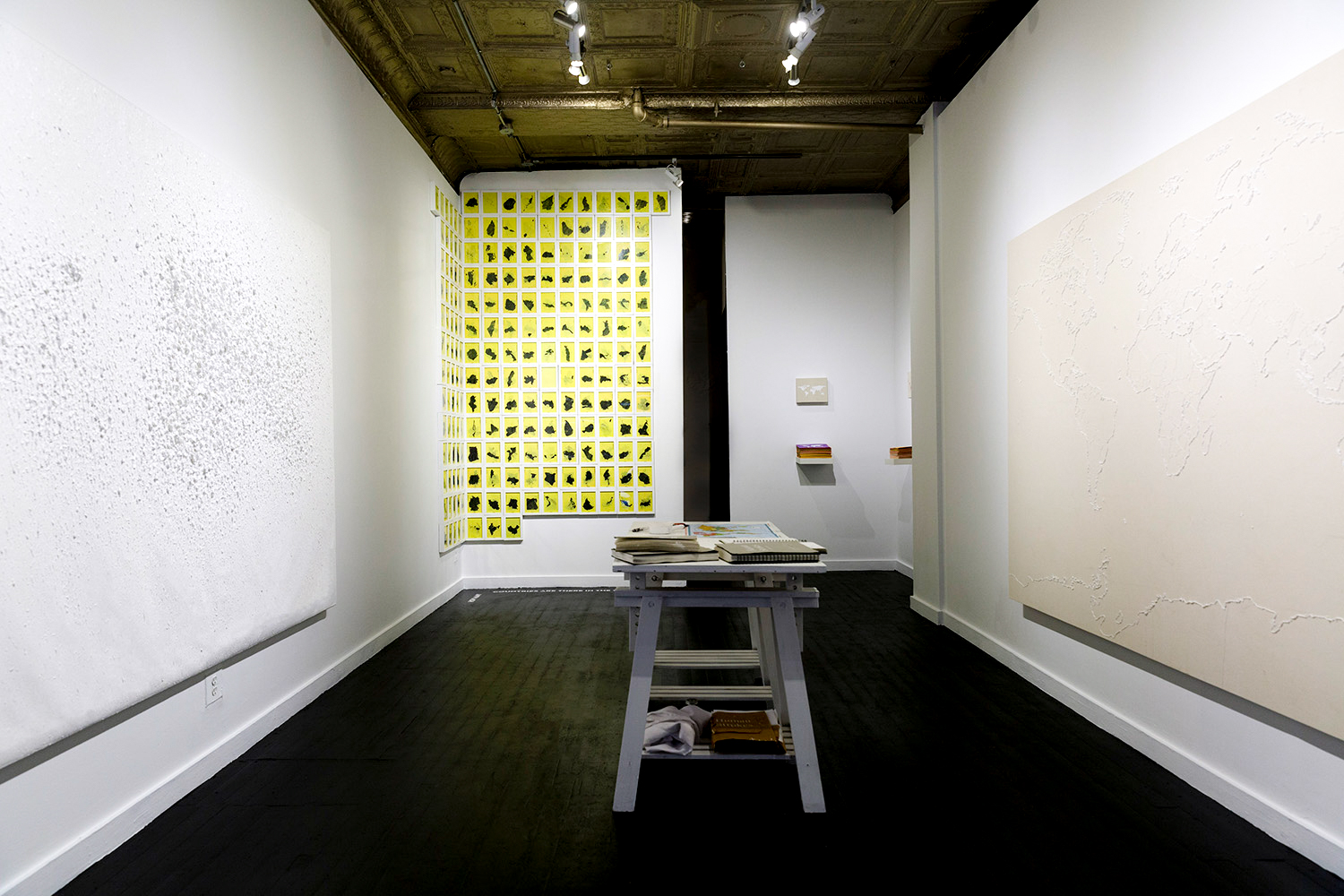
Capucine Gros
Implicit Borders: a cartography of free will
Installation View
New York, NY
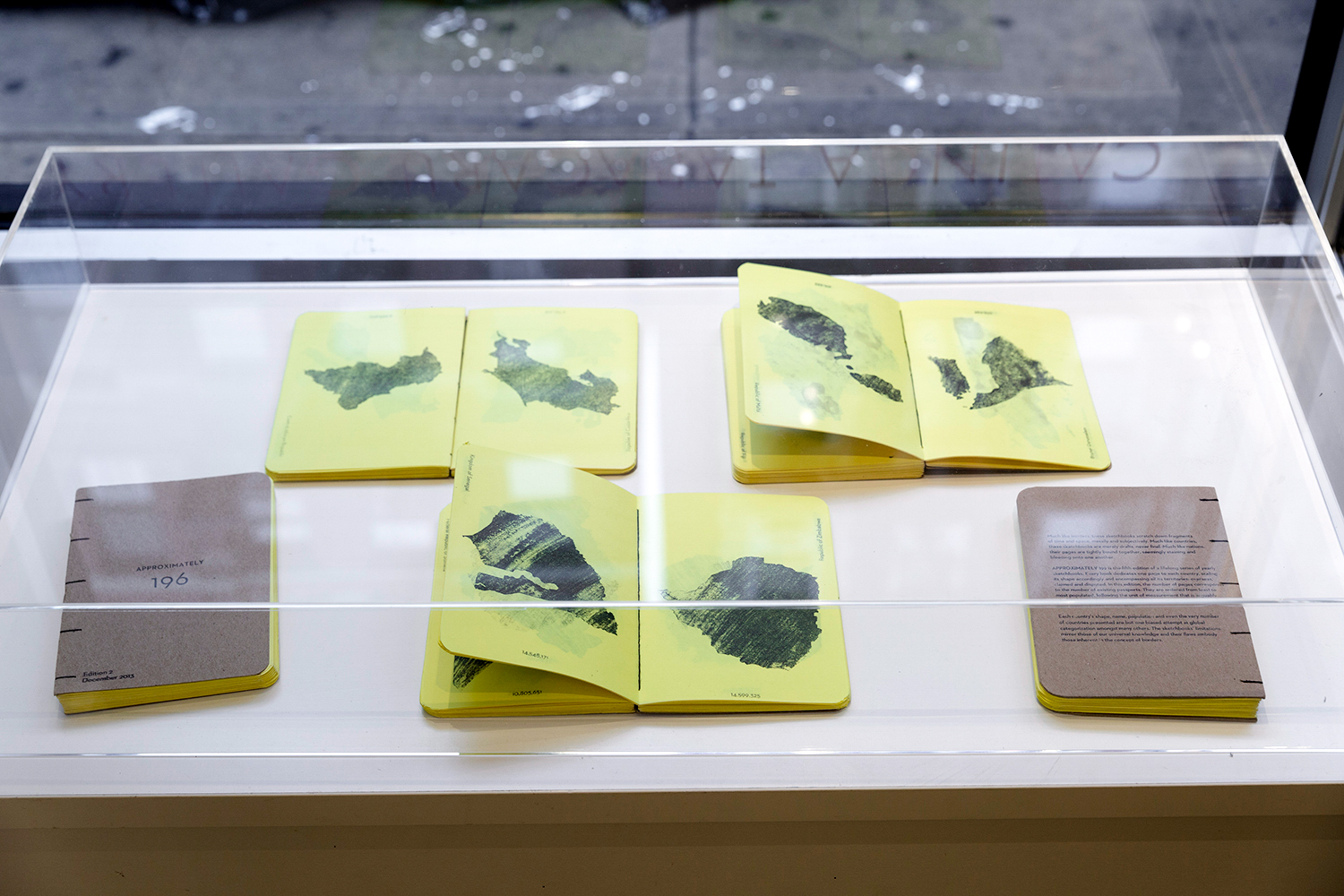
Capucine Gros
Approximately 199, 2012 – present
hand-print and hand-bound yearly sketchbooks
7 × 5 × 2 in

APPROXIMATELY 199
In the gallery we have hung a grid of 200 small maps, one for each of the 199 countries having passports, plus one territory-less yellow work for the 10,000,000 stateless humans in the world. These may be bought individually or in groups. Here, each acquisition creates conceptual data: Which countries are bought? Why does a person choose to own a particular nation? Which countries will remain behind? Capucine will repeat this project in other places in the world and will gather similar data. She will also continue to make a hand-crafted book each year throughout her life including that year’s number of countries in the world. Each small work costs approximately $199 (+taxes/fees).
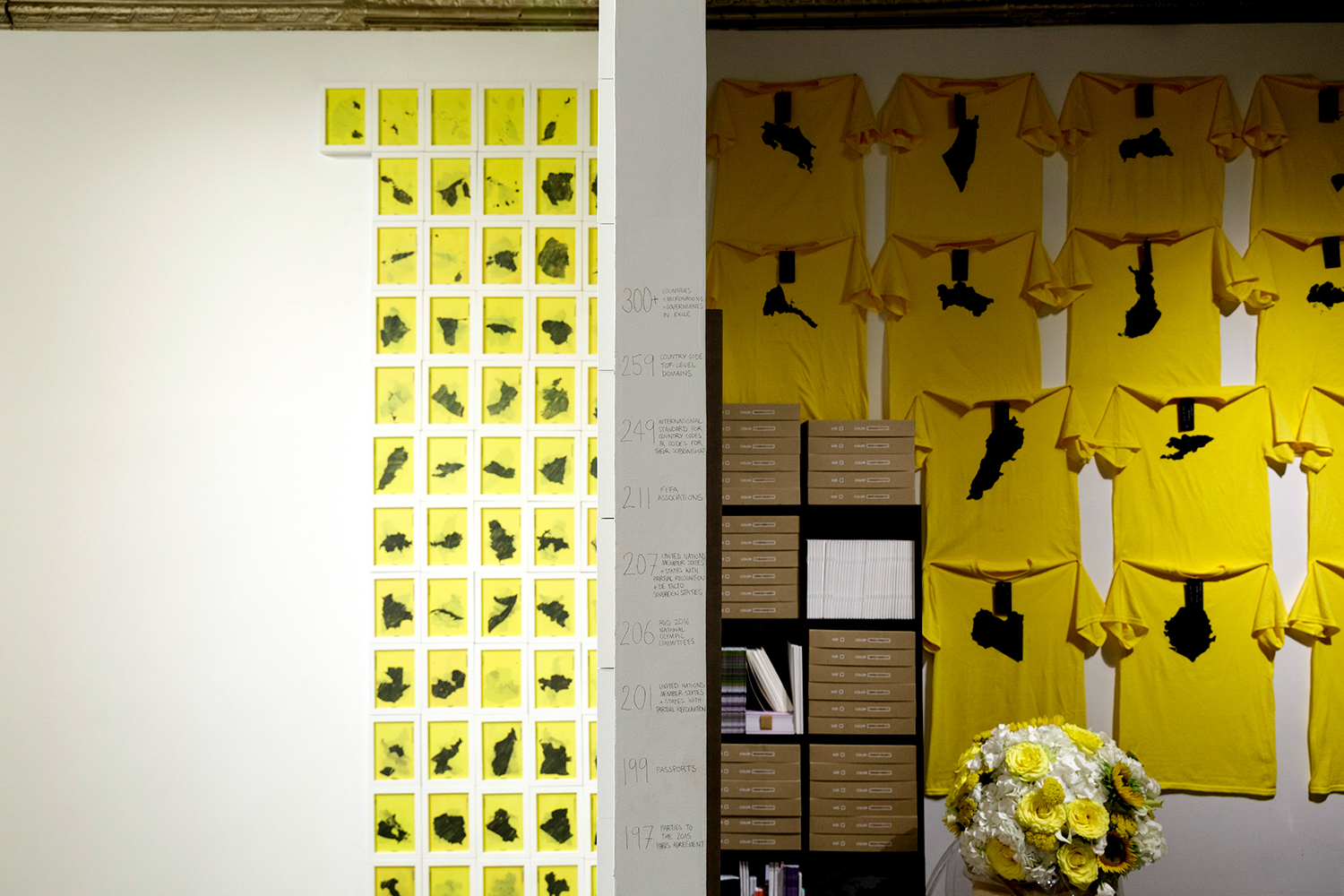
Capucine Gros
Implicit Borders: a cartography of free will
Installation View
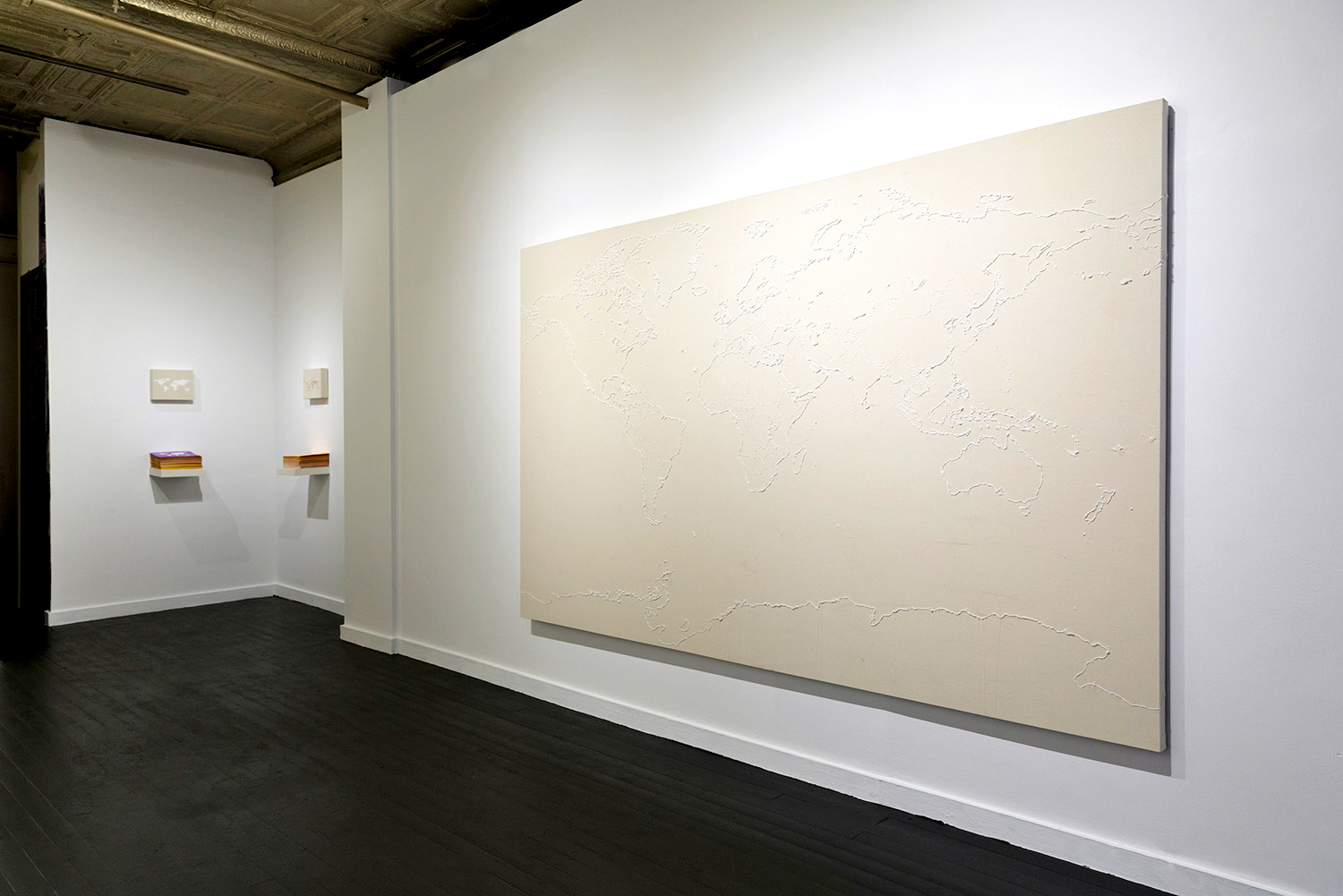
Capucine Gros
Implicit Borders: a cartography of free will
Installation View
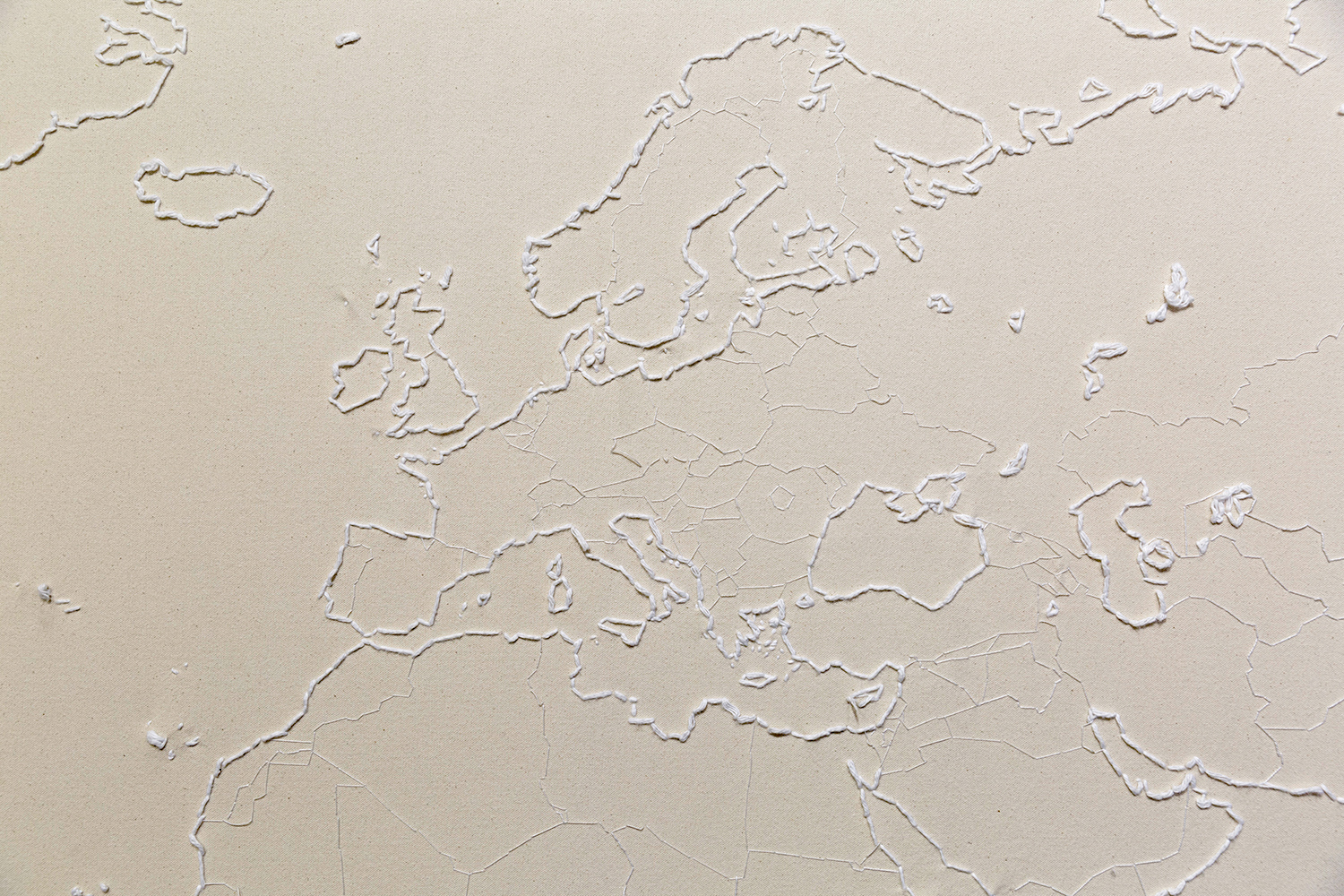
BORDERLINE (detail)
Capucine has been working on an embroidered world map since 2012. Thick white thread marks natural territories, while thin white thread marks man-made territories. This includes many disputed territories. This work is for sale in its current format. When it is acquired, it will freeze the artist’s process, creating a time capsule of territories today, and Capucine will begin a new map… starting from how things stand today in the world. This feels particularly on point considering the world’s map changed significantly a few days ago with the large iceberg breaking off.

GEOGRAPHY OF LOVE
These are two screen-printed world maps on linen. On the first, Capucine has stitched in red thread the places where the people she loves or loved are located. On the second, she has stitched where the people she could love might be. While the diptych in the gallery is not for sale, this project may also be acquired on a commission basis. A collector gives Capucine the locations of all the people they love or loved and Capucine makes a diptych using that person’s own experience. This project also has a take-away with stacks of world maps that visitors may take with them and mark on their own: The people they love and loved, and those they could love.
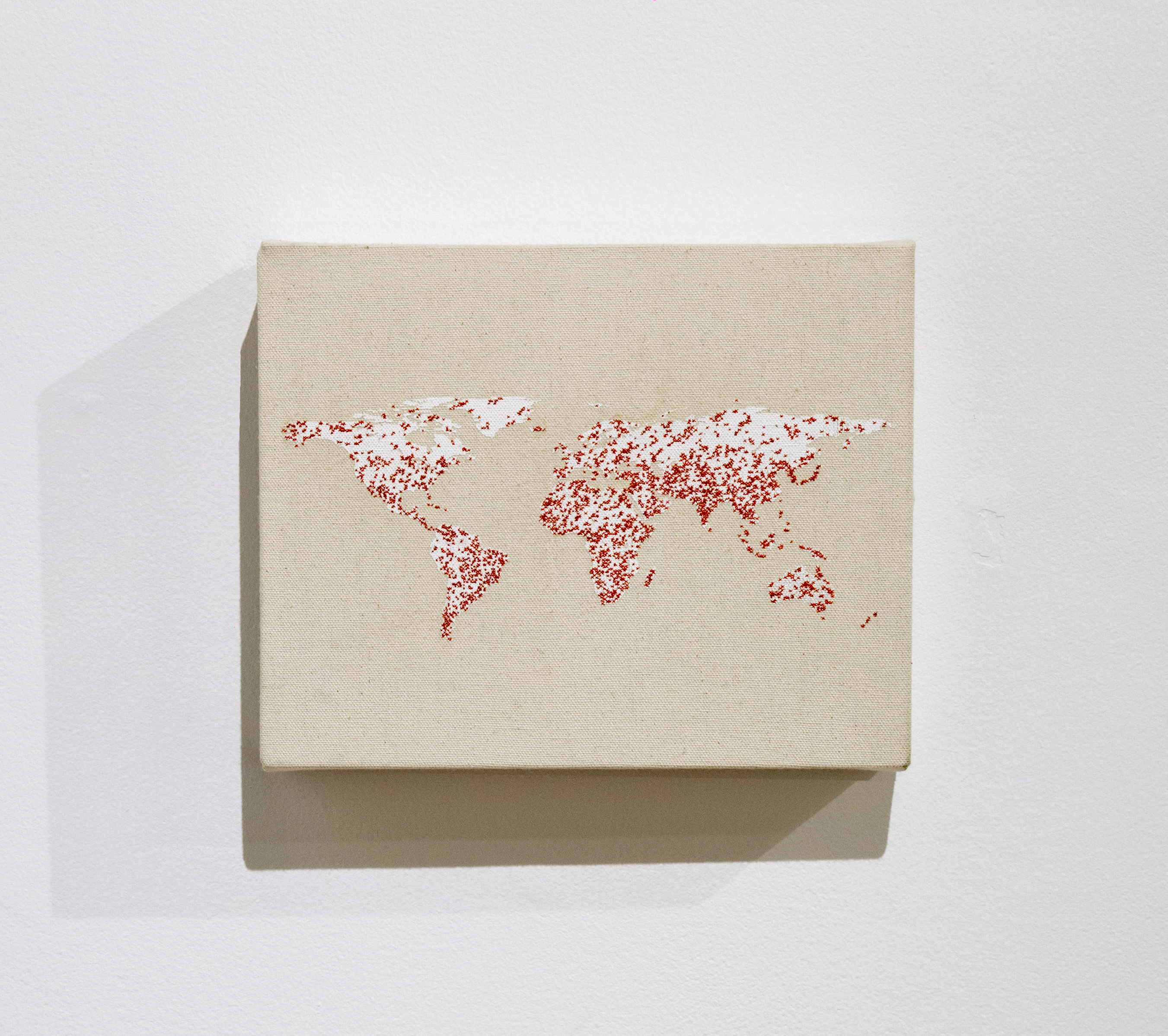
Capucine Gros
GEOGRAPHY OF LOVE (People I Could Love), 2015-2017
Screen-printed and hand-sticked on canvas
8.5 × 11 in
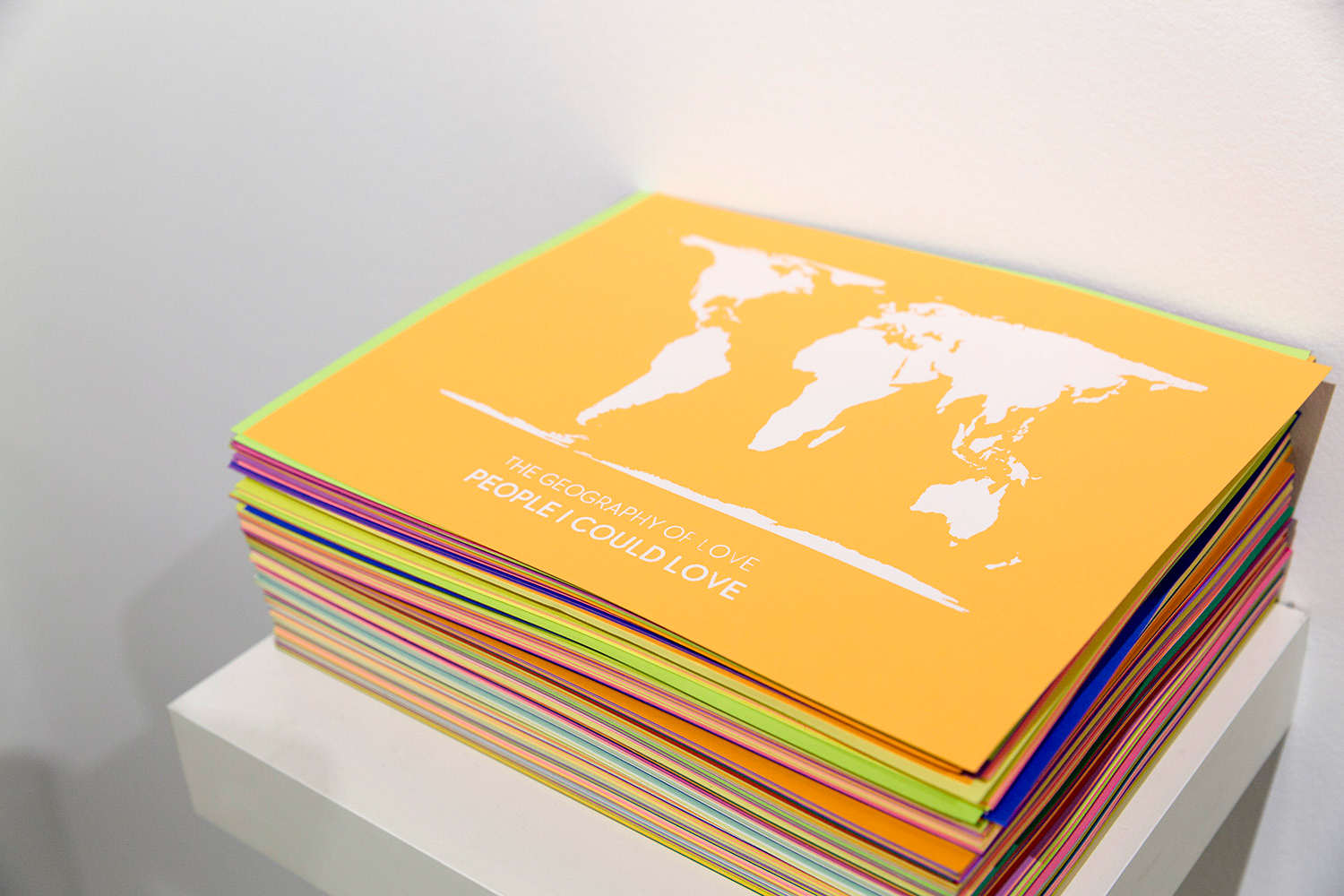
Capucine Gros
GEOGRAPHY OF LOVE public take away
New York, NY, July 13, 2017: In Implicit Borders: a cartography of free will, opening on July 13 at Catinca Tabacaru Gallery, Swiss-born artist Capucine Gros explores how geographical bias permeates body and mind, dauntingly limiting anyone and everyone’s global mobility and consciousness.
Gros traces the symptoms that are embedded in our existence but particularly noticeable in the peculiar strategies (some) humans invented to own the Earth and to quantify human lives: borders, nations, visas, G.D.P. 1, and media attention. The side-effects are indiscriminate, seen far and wide: from a migrant’s interdiction to cross an imaginary line to the common (mis)conceptions of one’s place in the world.
Even with the best intentions in mind, navigating the world and seeking to contribute to it may not go far until we first come to terms with our implicit bias. The projects in Implicit Borders: a cartography of free will specifically seek to fight geographical prejudice and help to better direct our moral compass.
There are exercises, simple in form yet deep in commitment: acknowledging every person we love (The Geography of Love, 2015 – present) and recording every death we learn about (Human Strokes, 2010 – present).
There are casual habits, small in constraint, but pervasive in their effect: calling each country by its proper name, widening crop marks, using area-accurate world maps, and counting human beings rather than G.D.P. (Approximately 199, 2012 – present).
There are mental leaps to stretch our conscience: imagining we were born somewhere else, or speculating on how different the world would be if everyone (you, me, us, them, teachers, students, politicians, taxpayers, producers, consumers, writers, readers…) envisioned that they cared about someone in every corner of the Earth. Why don’t we, and could we just dream we do so in order to concretely start caring? And how would that change what we say, do, read or buy; where we go and don’t go?
There are straightforward questions with not-so-straightforward answers: such as how many countries are in the world?
195 according to the U.S. Department of State but 193 when counting United Nations member states. 201 if adding states with partial recognition 2; 207 with de facto sovereign states 3 and over 300 if considering micronations and governments in exile. 196 countries ratified the Geneva Conventions and 197 the Montreal Protocol on Substances that Deplete the Ozone Layer. 124 are parties to the Rome Statute of the International Criminal Court and 197 4 are parties to the 2015 Paris Agreement. There are currently 211 FIFA5 Associations and there were 206 National Olympic Committees in Rio 2016. The ISO 3166 6 has 249 options and there are 259 ccTLDs 7 today. And if one counts passports instead: the number of countries is approximately 199.
There are also not-so-straightforward questions with straightforward answers: what makes a better border? Is it a line, coast, mountain, river, tectonic plate, wall, language, culture…? None, truly: they’re all abstract and fluid. How to comprehend big data ? Try counting it. How can we see through our own prejudice? Please, draw a map.
NOTES:
The artist will be in the gallery every day at 5pm during the length of the exhibition to work on the on-going, news-based painting Human Strokes (2010 – present).
Documentation of the artist’s performance Approximately 199 (March 20 – October 4, 2017) wearing one shirt each day per country in the world can be followed on Instagram @thestudiothatneversleeps
The t-shirts are for sale in the gallery in various colors and sizes. Buyers may select their color and size but not the country they purchase. Countries are randomly chosen, reflecting the fact that no one chooses where they are born.
1 Gross Domestic Product
2 Partial Recognition: officially acknowledged by at least one United Nations Member State
3 De Facto Sovereign States: not recognized by any United Nations Member State but operating independently from the country that claim them
4 197 including the E.U. and the U.S.A. which has announced withdrawal
5 FIFA: Fédération Internationale de Football Association
6 ISO 3166: International Standard for country codes and codes for their subdivisions, typically used in the default drop-down lists of websites across the world
7 ccTLD: Country code top-level domains (two-letter code for Internet domains designating specific countries, states or territories such as .us, .uk or .fr)